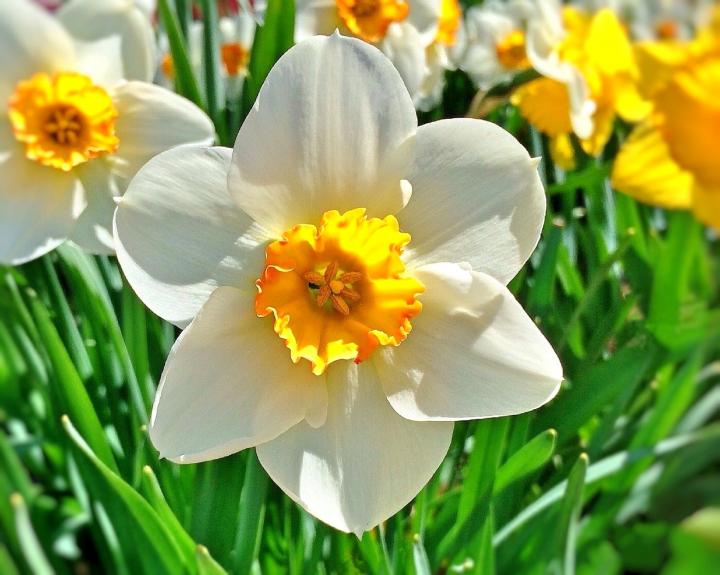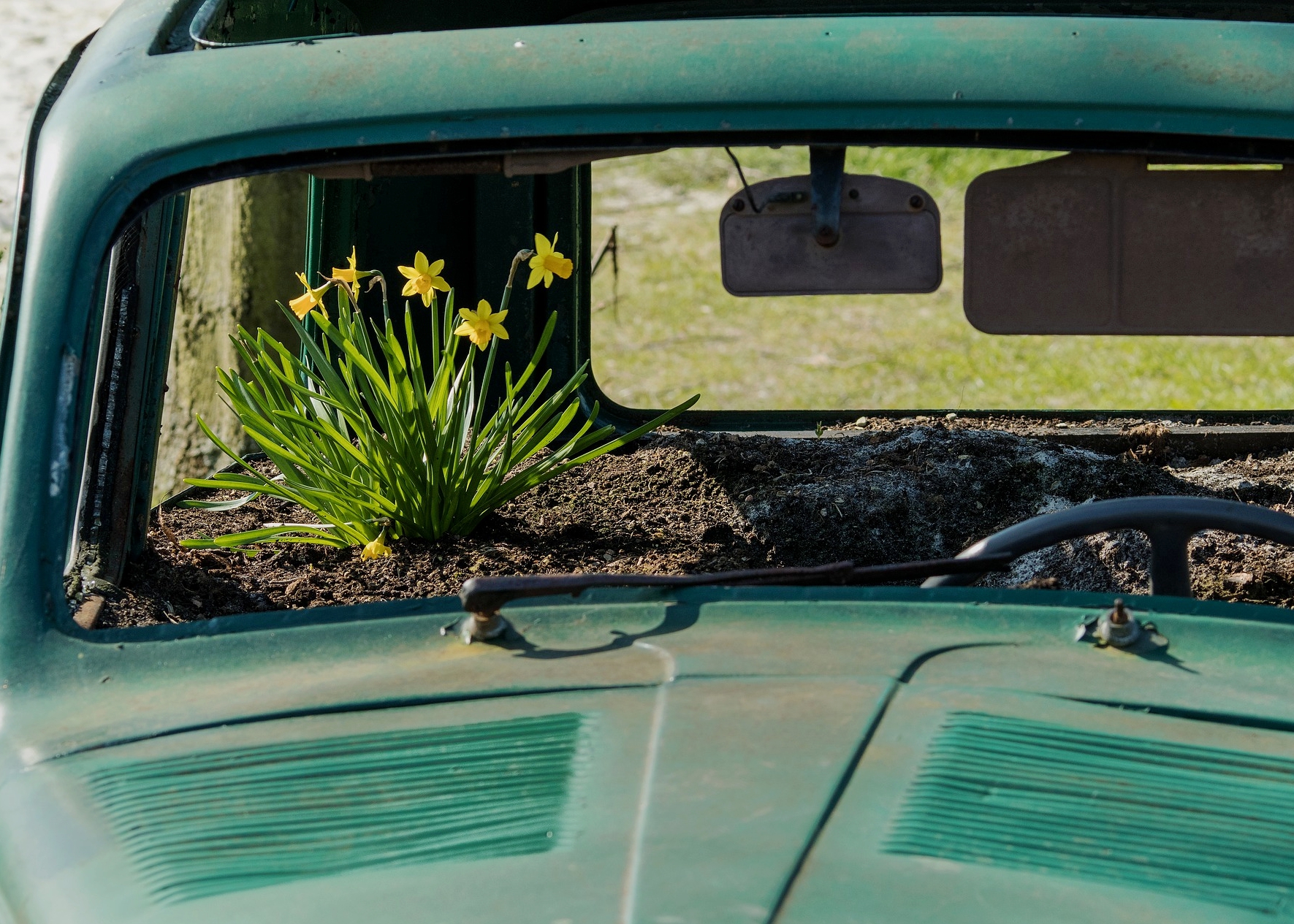Daffodils are often the first signs of spring, so it’s no surprise that they are the birth flower for March (and associated with Easter)! Learn about daffodil’s deep symbolism and find some growing tips for the garden.
The Daffodil
The traditional daffodil is either yellow, white or a combination of the two, with six petals and a trumpet- or bell-shaped crown that is frilled at its edge.
Native to northern Europe, daffodils can be grown in most of North America, except in the hottest and wettest areas.
Daffodils are best known for a single bloom on each stem, but others in the daffodil family, like the jonquil, will produce multiple blooms per stem. There are thousands of registered cultivars of daffodils!
Daffodils also go by their Latin name, Narcissus, which is the plant’s genus. Interestingly, the term “daffodil” doesn’t refer to a singular species; many flowers in the Narcissus genus go by the name. Jonquils, for example, are included within Narcissus and are sometimes called rush daffodils. So, a good thing to remember: all jonquils are daffodils, but not all daffodils are jonquils!
Daffodil Meanings and Symbolism
- It’s believed that the daffodils are named after Narcissus, the son of Cephissus, who was the river god in Greek mythology. According to legend, Narcissus fell in love with his own reflection in the water, and when he fell into the pool and drowned, the daffodil bloomed where he died.
- Because it is one of the first flowers to bloom in spring, daffodils are seen as a representation of rebirth and new beginnings. They are strongly associated with Easter because of this reason.
- Daffodils are traditionally given to someone in a bunch for good luck and happiness; a single daffodil is thought to bring about misfortune.
- In Wales, legend says that those who see the first daffodil of the season will be blessed with wealth in the coming year. Daffodils are also a traditional symbol of Wales and are often worn with the leek, especially on St. David’s Day (March 1), when the flowers often first appear.
- In China, if a daffodil blooms on the first day of a new year, it is thought to bring wealth and good fortune for the rest of the year.
- During Medieval times, it was thought that if a daffodil drooped as you looked at it, it was an omen of death.
- According to legend, the daffodil was viewed as a sign of hope in France.
- In the Middle East, it was thought to be an aphrodisiac and a cure for baldness.
- The daffodil is traditionally given to celebrate a 10th wedding anniversary.

Daffodils in History
- Daffodils are the national flower of Wales and are worn for St. David’s Day each year on March 1.
- In ancient Rome, the bulbs and roots of the daffodil were applied to treat tumors, while in other locations, it has been used to treat painful joints, wounds, burns, and bruises. Ironically, the sap of daffodils is actually an irritant, which is why it keeps deer and animals from eating it!
- A bioresearch company in Wales uses galantamine, a compound found in daffodils, to create drugs used to slow the progression of Alzheimer’s.
- Daffodils have been featured in several literary works by William Shakespeare and William Wordsworth.

Daffodils in the Garden
This perennial is hardy, easy to grow, and returns year after year. In fact, a daffodil field can flower for up to 50 years with adequate drainage and sunlight.
Daffodil bulbs are toxic to animals, so they’re a good choice if you have deer, rabbits, squirrels, or rodents. However, be sure you don’t have the kind of pet who would dig up the bulbs.
Planted in the fall—before the first frost—daffodils are one of the first flowers to bloom in the spring. To bloom in the spring, the bulbs need to experience a period of cold temperatures to promote root development, which is why they don’t grow well in hot climates.
After the flowers bloom and die in the spring, remove the faded flowers but let the foliage remain to help rebuild the bulb for the following year. Once the leaves have turned yellow, you can cut them back, too.
If putting daffodils in a vase, it’s often best to keep them in a bunch with each other. Daffodils release latex from their stems after being cut; this shortens the life of other flowers.
→ To learn more about growing daffodils, visit our Daffodils Growing Guide.
Learn More











